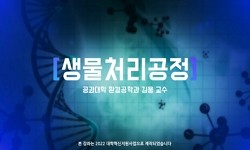Uranium-contaminated soil can be effectively decontaminated through acid leaching; however, this process process gen erates significant amounts of radioactive wastewater. Therefore, developing efficient methods to remove uranium from wastewater is ess...
http://chineseinput.net/에서 pinyin(병음)방식으로 중국어를 변환할 수 있습니다.
변환된 중국어를 복사하여 사용하시면 됩니다.
- 中文 을 입력하시려면 zhongwen을 입력하시고 space를누르시면됩니다.
- 北京 을 입력하시려면 beijing을 입력하시고 space를 누르시면 됩니다.


Evaluation of Uranium-Removal Characteristics From Soil-Washed Wastewater Using Precipitation Methods
한글로보기https://www.riss.kr/link?id=A109634365
- 저자
- 발행기관
- 학술지명
- 권호사항
-
발행연도
2025
-
작성언어
English
- 주제어
-
등재정보
KCI등재,SCOPUS,ESCI
-
자료형태
학술저널
-
수록면
131-138(8쪽)
- DOI식별코드
- 제공처
- 소장기관
-
0
상세조회 -
0
다운로드
부가정보
다국어 초록 (Multilingual Abstract)
Uranium-contaminated soil can be effectively decontaminated through acid leaching; however, this process process gen erates significant amounts of radioactive wastewater. Therefore, developing efficient methods to remove uranium from wastewater is essential to minimize radioactive waste generation. This study investigates the applicability of various pre cipitation methods for uranium removal from acidic wastewater produced during soil-washing processes. Three methods were evaluated: metal hydroxide (M–OHx ) co-precipitation, uranium peroxide (UO4 ) precipitation, and uranium phos phate (KUO2 PO4 ) precipitation. The M–OHx precipitation method removes uranium by precipitating excess metal ions in wastewater by adjusting the pH. This method is easy to use and has a high removal efficiency. The UO4 and KUO2 PO4 precipitation methods involve adding reagents to precipitate uranium in the mineral phase. They enable selective uranium separation and further volume reduction. In the results, M–OHx and KUO2 PO4 precipitation methods remove uranium to less than 1 mg∙L−1 within 2 h, demonstrating superior capabilities compared to UO4 precipitation. The optimal method is different depended on the management strategy for the recovered uranium. The M–OHx precipitation method was suitable for permanent disposal, whereas KUO2 PO4 could be recycled. Based on these findings, guidelines for the effective treat ment of wastewater containing uranium from the soil-washing process can be established.
동일학술지(권/호) 다른 논문
-
- 한국방사성폐기물학회
- 장인규
- 2025
- KCI등재,SCOPUS,ESCI
-
- 한국방사성폐기물학회
- 이창화
- 2025
- KCI등재,SCOPUS,ESCI
-
- 한국방사성폐기물학회
- 윤선광
- 2025
- KCI등재,SCOPUS,ESCI
-
The Role of Inert Atmospheres in Precision Analysis of Moisture in Molten Chloride Salts
- 한국방사성폐기물학회
- 최은영
- 2025
- KCI등재,SCOPUS,ESCI




 ScienceON
ScienceON 스콜라
스콜라





